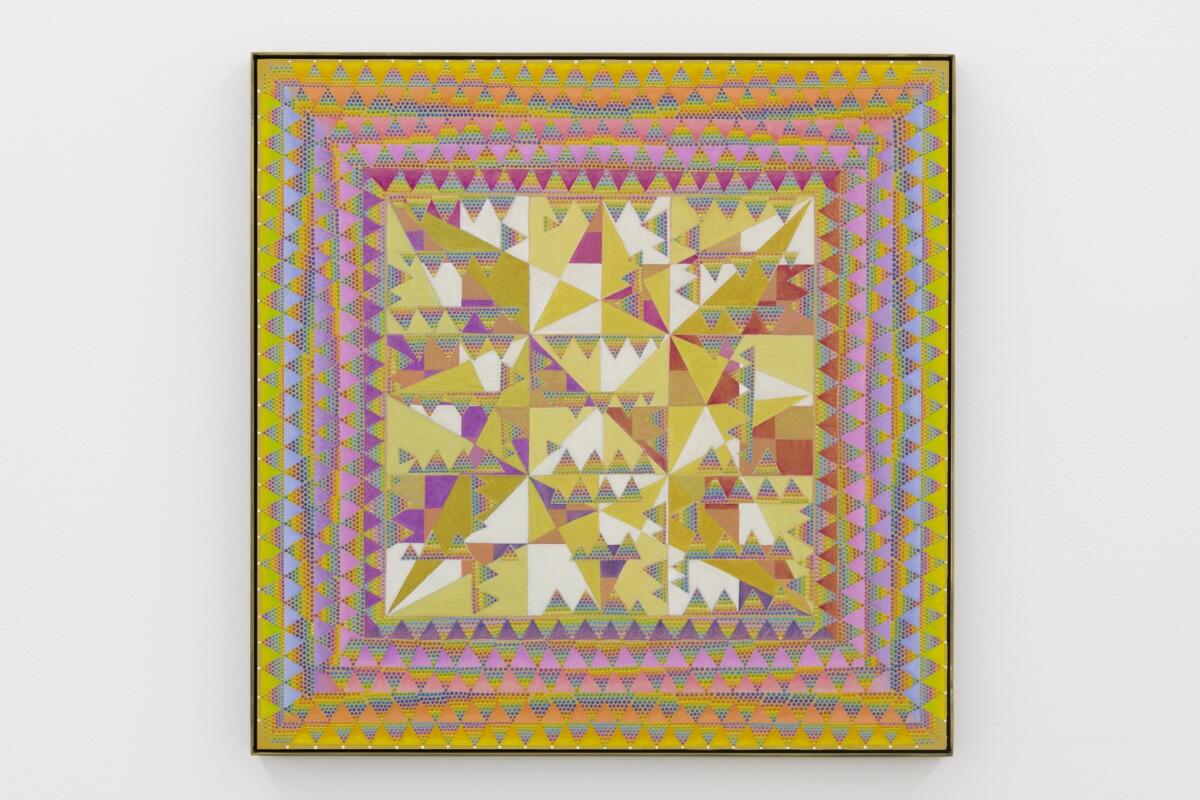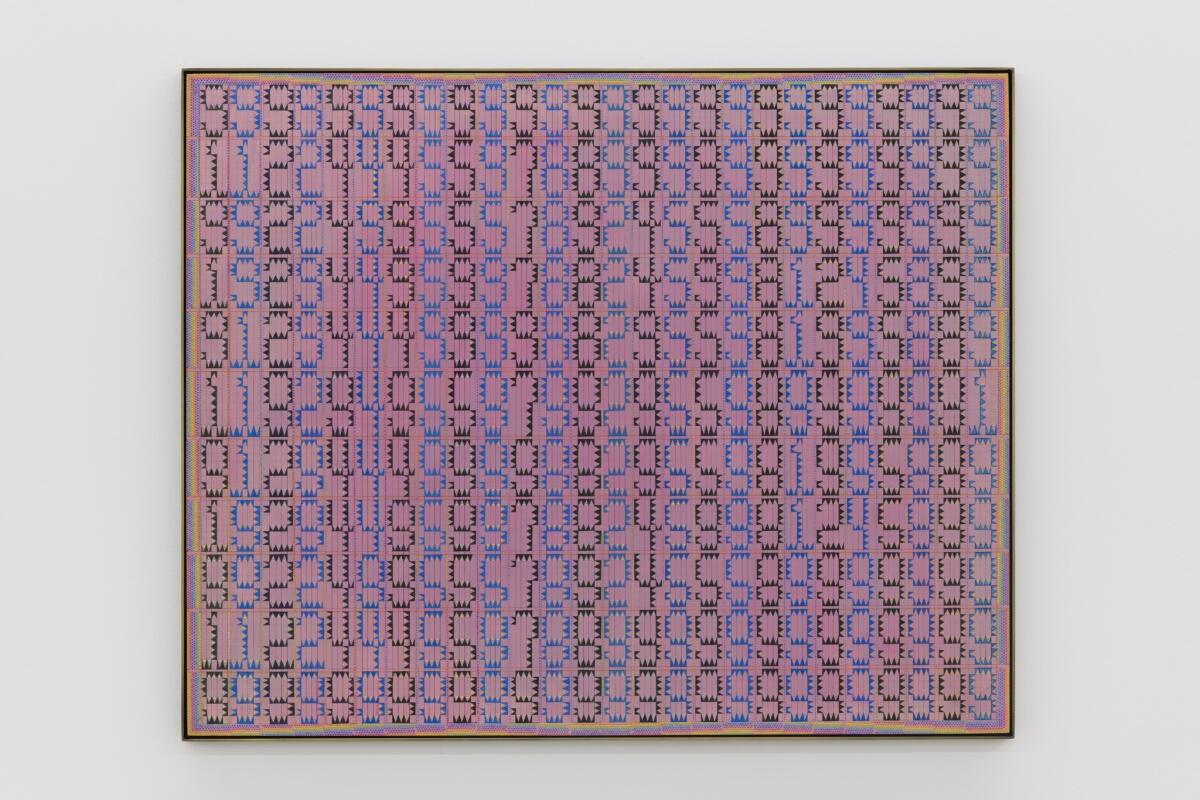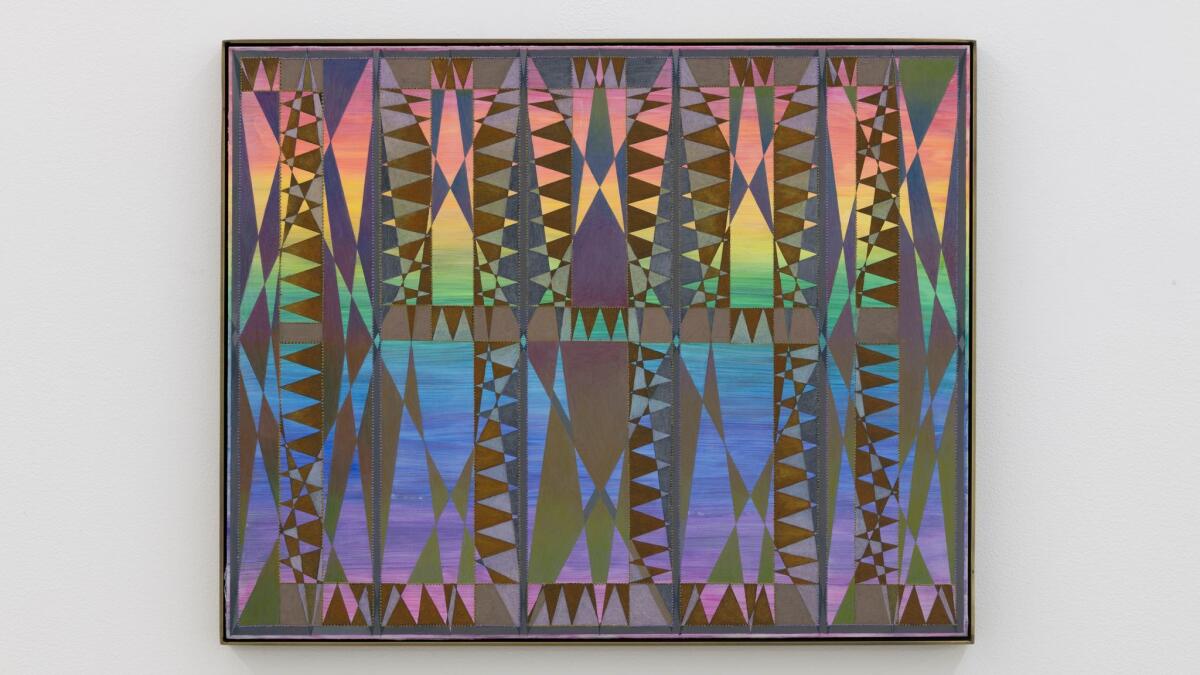Review: From the tiniest of pinpoints of color, Xylor Jane creates pulsating patterns of life
- Share via
Just after Impressionism left some painters feelings that art was getting too loosey-goosey, Pointillists such as Georges Seurat and Paul Signac strove to make painting more scientific. They applied colors in tiny dots and let them mix in our eyes.
Today, Xylor Jane takes their experiments further. At Parrasch Heijnen Gallery, the Massachusetts-based artist makes painting mathematical. She applies colors in even tinier dots, often arranged so that they represent numbers, which form aesthetically charged sequences.
Her third solo show in Los Angeles, “Magic Square for Earthlings,” is a tour de force of delicacy and nuance, its devotion and generosity putting visitors in touch with otherwise invisible patterns and rhythms that structure the cosmos while making us see that we are part of the mystery.

No two of Jane’s 10 intimately scaled paintings look alike. Each changes radically as you move close and step away. That’s because the dots of paint Jane has applied are smaller than the head of a pin and pointed, like the pin’s business end. They cast mini shadows.
Some of Jane’s paintings resemble the impossible offspring of fractals and crazy quilts and Navajo blankets and diamond-studded jewelry, their subtly pulsating patterns appearing to be kinder and gentler versions of Op Art’s jarring compositions, perhaps what Agnes Martin would have painted if she were into hallucinogens.
Others recall signs illuminated by LEDs, their flashing numerals transformed into constellations of various densities. Still others do both: interweave numbers and patterns in intoxicating geometries that evoke infinity while remaining grounded in the present.
With great patience — and a large magnifying glass — Jane has made paintings that invite you to do two things at once: look at them and through them, relishing the tactility of their surfaces and peering into spaces that seem to reach far beyond what is possible. Like Lee Mullican’s great palette-knife paintings, Jane’s do double duty — and then some.

The numbers Jane parades across her panels add mind-expanding complexity. A lovely pink field, interspersed with black and blue triangles that form a seemingly endless string of numerals is titled “Nines (Twenty-six 11 digit prime palindromes arranged in columns selected from a group of 42,100).” Another painting's title, “91418,” represents the date (Sept. 14, 2018) when she will have been alive 19,991 days — the last prime palindrome she expects to experience.
All her paintings seem to be breathing, pulsing with the quiet vitality of living things. Best of all, they breathe life into their surroundings, where visitors are the recipients of their beneficence.
Parrasch Heijnen Gallery, 1326 S. Boyle Ave., L.A. Through Feb. 17; closed Sundays and Mondays. (323) 943-9373, www.parraschheijnen.com
See all of our latest arts news and reviews at latimes.com/arts.

MORE ART
Mark Grotjahn declines a MOCA honor
Dora De Larios, innovative ceramicist, dies at 84
Why American Indian images became advertising symbols
UPDATES:
For the Record
Updated at 10:46 p.m. An earlier version of this article erroneously said Xylor Jane is based in Boston. She is based in a different Massachusetts city. “Magic Square for Earthlings” is her third L.A. show, not her first. The article also mischaracterized the work “91418,” whose title represents the date (Sept. 14, 2018) when she will have been alive 19,991 days — the last prime palindrome she expects to experience.
The biggest entertainment stories
Get our big stories about Hollywood, film, television, music, arts, culture and more right in your inbox as soon as they publish.
You may occasionally receive promotional content from the Los Angeles Times.







